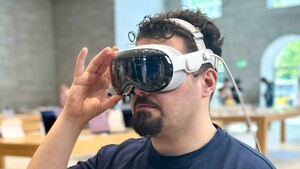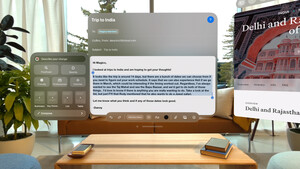There's no completely free lunch, however. ASW doesn't scale well below half the display's refresh rate. Depending on what's being displayed, there may be visual artifacts present as a result of imperfect extrapolation. Typical examples include:
Rapid brightness changes. Lightning, swinging lights, fades, strobe lights, and other rapid brightness changes are hard to track for ASW. These portions of the scene may waver as ASW attempts to find recognizable blocks. Some kinds of animating translucency can cause a similar effect.
Object disocclusion trails. Disocclusion is a graphics term for an object moving out of the way of another. As an object moves, ASW needs something to fill the space the object leaves behind. ASW doesn't know what's going to be there, so the world behind will be stretched to fill the void. Since things don't typically move very far on the display between 45 fps frames, these trails are generally minimal and hard to spot. As an example, if you look closely at the extrapolated image from the screenshots here you'll see a tiny bit of warping to the right of the revolver.
Repeated patterns with rapid movement of them. An example might be running alongside an iron gate and looking at it. Since parts of the object look similar to others, it may be hard to tell which one moved where. With ASW, these mispredictions should be minimal but occasionally noticeable.
Head-locked elements move too fast to track. Some applications use a head-locked cockpit, HUD, or menu. When applications attempt to do this on their own without the help of a head-locked layer, the result can be judder because the background is moving fast against the head-locked object. Some accommodation can be made with ASW, but users can move their head fast enough that they'll no longer track properly and the result won't be smooth. Using the head-locked layers (ovrLayerFlag_HeadLocked) provided by the Oculus Rift SDK will produce the ideal result.
Outside of point 4, you shouldn't avoid scenarios that produce these artifacts but rather be mindful of their appearance. ASW works well under most, but not all, circumstances to cover sub-90fps rendering. We feel the experience of ASW is a significant improvement to judder and is largely indistinguishable from full-rate rendering in most circumstances.



